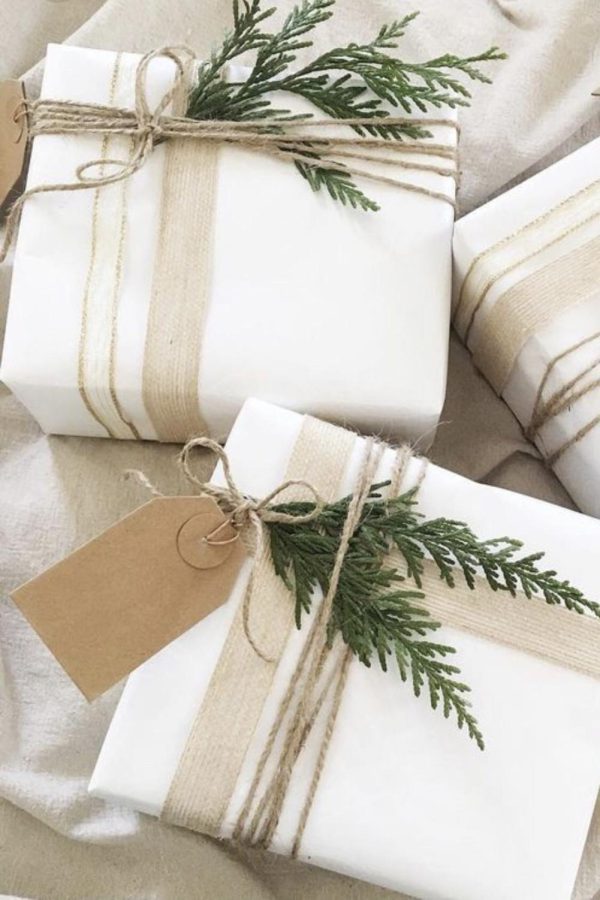Eco-friendly Christmas swaps for an environmentally conscious season
An example of how beautiful Eco-friendly wrapping paper can look
Each year, when glistening specks of ice coat my home as if I was in a snow globe and the pleasant aroma of evergreen wafts through the air, I am reminded of the extent to which I fully enthrall myself in the Christmas season.
However, no matter how deep my affection goes for the magical month of December, I can no longer deny its dire effects on the environment. From the 25% increase of waste at this time of year, which amounts to an extra one million tons per week, to the pure hastiness that can occur when buying presents, it might be time for an equally whimsical yet more eco-friendly Christmas.
One of the biggest concerns is the perishable or single use of Christmas decorations, such as plastic ornaments, tinsel, and even beloved Christmas lights.
Most tinsel that is currently being sold is made out of plastic, which will take upwards of 450 years to fully decompose, and worse yet, most tinsel is being replaced every one or maybe two years. These factors make it one of the worst Christmas decorations to buy when concerning the environment.
If you’re able to part with the classic look of sparkly plastic on your tree, then there are a few swaps that might lower your seasonal waste.
To make life interesting, I personally would hold a craft night. You can play some Christmas music and make a paper chain garland—just like the kind I used to make when I was little—or even bring back older traditions and string some popcorn. The paper from the chain can then be recycled at the end of the season, avoiding the landfills altogether. And as for the popcorn, it is compostable.
The next popular decor to touch on is lights. Although avoiding putting Christmas lights on your tree would dramatically benefit the environment, I know many people would have an increasingly harder time getting rid of them compared to tinsel.
So, rather than exchanging the lights completely, I recommend a few different alternatives. For outdoor lighting, solar-powered lights do exist, however, for indoors, start off by making sure you are using LED light bulbs, as they use less energy, last longer, and are overall a cheaper alternative. LED lights can last for seven to ten years, but once they eventually stop working, dispose of them the proper way, as directed on the box or by a simple google search. Either way, they’re vital to minimizing waste.
Little actions, like caring about how your Christmas lights are affecting our world, is how we can all reduce our carbon footprint one step at a time.
My final Christmas swap is my favorite, and it’s wrapping paper. Colored or glossy wrapping paper often contains plastic, excess chemicals, and other factors that make it impossible to compost and hard to recycle. As an alternative, try wrapping your gifts with festive fabrics, newspaper, or even brown paper bag material. Each of these options can look equally beautiful, if not better, underneath your environmentally conscious Christmas tree.
Taking the action to do all, or even just one of these alternatives, will help reduce waste this Christmas because although I am thankful to have a gorgeously decorated home, I also choose to be thankful for the world beyond my own two eyes.

Allie Beaumont is a Senior on The Central Trend. She is entering her fourth and final year on staff and could not be more excited. This year she received...

























































































